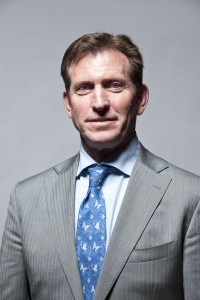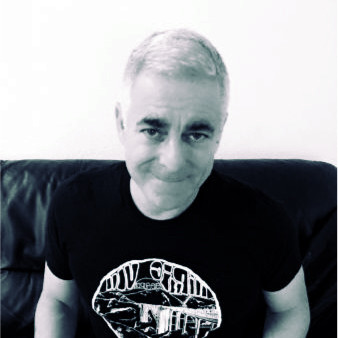 When it comes to the UK, for a very long time the only infrastructure market that mattered to much of the industry was the London metro area. Investments in metro fiber in other markets around the country rarely moved the needle, and attention tended to focus on the behavior of the incumbent. CityFibre is one of the young operators out there challenging that status quo, and now has six ‘Gigabit City’ build-out projects and a host of other expansions underway. Late last year they also made an inorganic move that brought the KCOM network assets into the fold. With us today to talk about CityFibre’s origins, growth, and plans for the future is CEO Greg Mesch.
When it comes to the UK, for a very long time the only infrastructure market that mattered to much of the industry was the London metro area. Investments in metro fiber in other markets around the country rarely moved the needle, and attention tended to focus on the behavior of the incumbent. CityFibre is one of the young operators out there challenging that status quo, and now has six ‘Gigabit City’ build-out projects and a host of other expansions underway. Late last year they also made an inorganic move that brought the KCOM network assets into the fold. With us today to talk about CityFibre’s origins, growth, and plans for the future is CEO Greg Mesch.
TR: How did CityFibre get started? Where did the original idea come from?
GM: CityFibre was established in 2011 through the acquisition of several already established fiber optic businesses. We recognized there was a real absence of infrastructure competition outside all but the largest cities in the UK and that this presented a huge opportunity, particularly given the UK’s increasingly heavy reliance on the digital economy. We could also see that the country’s poor standing in the FTTP rollout league tables in Europe opened up a huge opportunity for a new force in the market.
Three years after formation, CityFibre listed publicly on the London Stock Exchange’s AIM market in January 2014, raising £16.5 million and gaining access to long term funding opportunities. In 2014 we raised a further £30m in an oversubscribed private placing, taking total equity raised to £46.5m.
In December 2015, with six Gigabit City projects in York, Peterborough, Coventry, Aberdeen, Edinburgh and Glasgow under our belts we acquired KCOM’s national fiber assets for £90m via additional financing of £180 million. This immediately increased our network footprint by 3x to 36 cities, putting us on track to reach a total of 50 cities by 2020 (c20% of the UK market).
Our network currently covers an addressable market of 24,000 public sector sites, 245,000 businesses, 7,000 mobile cell sites and 3.5m homes.
The UK’s cities need a fit-for-purpose digital infrastructure to compete and succeed in the decades to come and we can now confidently say we meet that need.
TR: What projects is CityFibre working on right now?
GM: At this moment we are fully focused on the commercialization of our network footprint, which has trebled, since our purchase of KCOM’s assets in December.
We acquired more than 1,100 km of dense metro duct and fiber network in 24 UK cities and 1,100km of national long distance network that connects these cities to major data-centers across the UK and to Internet peering points in London. Our objective is now to increase the number of communication providers, mobile operators and data centres using this footprint.
We’ve already seen a surge in interest from communication providers since the acquisition so now it’s a case of on-boarding them and migrating their customers onto our networks. We’re doing this city by city and recently announced our plans to start doing this in Bristol. Overall, we already have over 3000 sites connected across the UK.
TR: What is a Gigabit City in layman’s terms? How much of it is the fiber infrastructure you are building versus the ecosystem that springs up around it?
GM: A Gigabit City is a place in which a state-of-the-art, pure fiber infrastructure is deployed to support the current and future capacity requirements from the business community, public sector, mobile operators and datacenter providers. In all of our Gigabit Cities, our networks can ultimately form a backbone for future deployment of gigabit capable, fiber-to-the-home (FTTH) offerings.
Our Gigabit City networks continue to grow, expanding to new and under-served areas and increase density as more customers are connected. Over time a Gigabit City attracts inward investment, as it becomes a highly attractive place to start and grow a business. It also helps stimulate innovation in healthcare, education and consumer services.
TR: Where do you plan to expand to next? How do you choose?
GM: Given our recent network acquisition, our primary focus is not on expansion but on increasing the utilization of our national footprint. We are however targeting a further 14 new cities by 2020 which will bring our total city count to 50 and enable us to address 35,000 public sector sites, 350,000 buinsesses, 10,000 macro cell sites and over 5 million homes. New cities are getting easier to secure though as more begin to understand and witness the transformational impact a Gigabit City infrastructure delivers
Which cities we choose depends on dozens of factors but enthusiasm from a local government authority to attract a Gigabit City investment is one of the most important.
TR: Will you remain focused on the UK or are other European markets attractive to you as well? Ireland, perhaps?
GM: The biggest opportunity for us is the UK market. We are a hugely digitally dependent nation with a deficit in fibre infrastructure. For a business like ours – why look elsewhere?
TR: Talk to us about your recent acquisition of KCOM’s assets, how did that deal come about and why was KCOM chosen? Are there any more plans for M&A activity or will all growth be organic from now on?
GM: The acquisition of KCOM’s national fiber and duct network assets outside Hull and East Yorkshire was transformational for CityFibre and is the most significant event to take place in the UK’s digital infrastructure market in a decade.
The assets represent by far and away the largest single fiber network acquisition opportunity in the UK. Acquiring these assets enabled us to triple our network reach, providing our growing customer base with a national fiber footprint and creating a meaningful national alternative. As any network builder or owner knows, the value of a network is not just the fibre itself, it’s the ducts and access points and rights of way that come with it. We can’t overstate the collective value of the assets we have acquired, and we believe that we bought them at a 45% discount to replacement cost.
The deal has led to CityFibre becoming the largest wholesale infrastructure provider in the UK after BT and the first challenger to this national incumbent, nearly 10 years to the day since it created its Openreach business.
We will always keep our eyes open for M&A opportunitites but we have the perfect foundation from which to optimize our organic growth in coming years.
TR: How does building metro fiber in the UK differ from the US and from other European markets?
GM: The principal difference is that in the US there is a much greater requirement for city-to-city connectivity. In the UK, inter-city connectivity is well served, it’s the networks in the cities themselves that are the weak links in the chain.
What’s more, in our market there is no meaningful competition in the deployment of new metro fibre networks.
TR: What sort of regulatory environment do you face in building fiber in UK towns and cities? Are the hurdles more local or national?
GM: Given BT’s position in the UK telecoms market, regulation has traditionally focused for the most part on BT. As more players enter the market, regulation is beginning to recognise the fact that infrastructure investment now comes from multiple parties and not just an incumbent.
Broadly we believe that the current regulatory environment seeks to support infrastructure competition for the ultimate benefit of consumers and businesses. We are confident that the nature of our business model and our rapid growth is aligned with government aims and regulators’ desires for increased competition.
TR: Your build-outs seem to have focused on enterprise and government locations. Do you see fiber-to-the-tower and small cell as playing a bigger role going forward?
GM: Absolutely. We have built the UK’s first dark fiber to the tower network in Kingston-Upon-Hull which is proof that mobile operators urgently need to address backhaul to mobile masts. We anticipate this becoming a huge opportunity for our business. Our network is within 100 meters of over 7000 mobile cell sites in the UK and we already have trading relationships with some of the UK’s biggest mobile operators – EE, Three UK and Vodafone and our newly extended network reach will provide them with even greater scope in 2016.
TR: Thank you for talking with Telecom Ramblings!
If you haven't already, please take our Reader Survey! Just 3 questions to help us better understand who is reading Telecom Ramblings so we can serve you better!
Categories: Industry Spotlight · Metro fiber






Discuss this Post